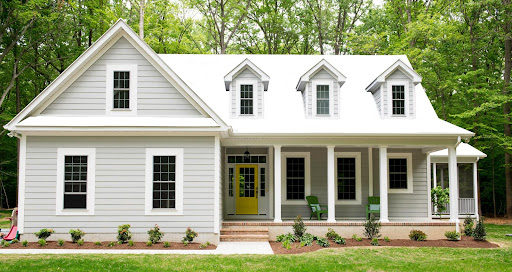
A non-reflective rooftop is one of the hottest places out there during the heat of summer. That heat penetrates roofs and warms up attics and top floors, even with good insulation. This forces air conditioners to work overtime just to keep up. The key to avoiding this expensive problem is to replace or treat those roofs with reflective, cool roofing materials.
Replacing an existing roof is often costly, but a new cool roof may pay for itself over time. This is especially true if your current roof is your home’s biggest energy efficiency weak spot. Don’t worry if you’re not financially prepared for such a big job! You may be able to achieve similar results by applying energy-efficient roof coatings at a fraction of the cost.
ENERGY STAR Roofing
Homeowners have a helping hand in choosing energy-efficient roofing materials thanks to the federal ENERGY STAR program. The same ENERGY STAR labels you see on the most efficient appliances also apply to shingles, roofing panels, energy-efficient roof coatings, and other related materials.
The roofing materials that have earned the ENERGY STAR label have a high degree of solar reflectance. This means that they reflect more of the sun’s heat than other materials. These materials can lower the surface temperature of a roof by as much as 50 F! That can reduce peak demand on air conditioners by up to 15 percent.
Roof Color and Energy Efficiency
You might assume that a lighter-colored roof is always better than a darker roof. However, the reality isn’t quite as straightforward. While lighter colors are inherently more heat reflective, roofing materials have a much larger impact on roofing energy efficiency. A darker ENERGY STAR-rated roof will usually outperform a lighter roof that isn’t designed with efficiency in mind.
You also need to think about your climate. Lighter roofs can be a clear choice in the warmest climates. Homes in cooler climates are often better suited by a darker roof that can absorb a little free heat from the sun during winter.
No matter what type of roofing material you ultimately choose, you’re likely to find a variety of colors within that range. It’s usually best to choose your material first and your color later.
What Roofing Material is Most Energy Efficient?
Asphalt shingles are the most commonly used roofing material due to their low cost and ease of installation. Unfortunately, asphalt shingles are great at absorbing heat and poor at reflecting it, even when they’re lighter in color.
Many of the energy-saving roofing systems that qualify for the ENERGY STAR label are made from metal. This is because it’s highly reflective, even though metal gets very hot in the sun. Most of that heat is redirected away from the home below. Metal roofs can be designed as a series of panels or as more traditional-looking shingles. They’re also relatively easy to install.
Another good choice for energy-efficient roofing is a tile roof. Tiles can be made from slate, clay, or concrete, the latter of which is exceptionally durable. Many tile roofing materials are pre-treated to maximize heat reflectivity. These types of roofs are also easy to treat with reflective coatings after they’ve been installed.
What About Non-Shingle Options?
Coatings can be applied to a range of roofing materials. However, they work least well with asphalt roofs. Most coatings also change the color or physical appearance of the roof, and the most reflective coatings may not be a good aesthetic match for your home’s exterior colors. There are also pigmented coatings though! They may be less effective than their white counterparts, but they still add a reflectivity boost to any roof.
Finally, you could always consider a green roof if you have a flat roof. Not a roof that is painted green, but rather a rooftop garden. Designing and installing one of these properly is often a major undertaking and expense. However, it’s not only energy-efficient, but it also creates a whimsical environment in a previously unused space. It can even be used to feed your family!
Insulate for Added Energy Efficiency
An energy-efficient roof makes a huge difference, but it can’t do all the work. If the insulation in your attic is not up to snuff, you’re still likely to have a problem. Installing attic fans and rafters can also encourage air circulation in a way that will bring down temperatures beneath your roof. You should think of upgrading your attic if you’re considering energy efficiency upgrades for your roof.
Don’t let a dark asphalt roof absorb heat into your home summer after summer. Start thinking about your new roof today, and choose energy-efficient roofing materials to help it pay for itself. We can help you out. Just give us a call.

